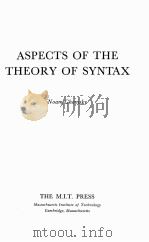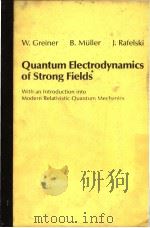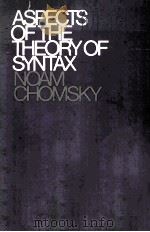《Mathematical Aspects of The Quantum Theory of Fields》
| 作者 | K.O.Friedrichs 编者 |
|---|---|
| 出版 | 未查询到或未知 |
| 参考页数 | |
| 出版时间 | 没有确切时间的资料 目录预览 |
| ISBN号 | 无 — 求助条款 |
| PDF编号 | 820353638(仅供预览,未存储实际文件) |
| 求助格式 | 扫描PDF(若分多册发行,每次仅能受理1册) |

Introduction1
Remarks about Functional and Spectral Representation4
Part Ⅰ.Field Operators11
1.Simultaneous Spectral Representation of Infinitely Many Operators11
2.Commutation Rules and Improper Operators13
3.The Differential Equations17
4.The Energy Integral20
5.Motivation of the Configuration Space Representation25
Part Ⅱ.Particle Re presentation28
6.Biquantization28
7.Remark on the Occupation Number Representation35
8.Annihilation and Creation Operators37
9.Time Variation of Annihilation and Creation Operators and Representation of Field Operators45
10.Trace Operators46
11.Oscillators51
12.Hermite Functionals and Integration over the Hilbert Space52
Bibliography to PartsⅠand Ⅱ63
Part Ⅲ.Boson Field in Interaction with a Given Source Distribution65
13.Expectation Values of the Energy and the Number of Bosons65
Representations67
Operators and Differential Equations68
Asymptotic Expectation Values72
Modified Particles77
14.Particle Representation of the States of the Boson Field Modified by a Source Distribution79
First Form of the Operator T83
Second Form of the Operator T86
Modified Vacuum State88
Transformation to the Modified Particle Representation89
Probabilities in General91
Derivation92
Probabilities in Special Cases93
15.Transition Probabilities95
Transition Probabilities for the Vacuum State97
General Transition Probabilities99
Perturbation102
Method of Spectral Transformation103
16.Boson Fields under the Influence of a Source Distribution Which Varies in Time104
Infinitely Slow Switch-on107
Removing Sinks from Sources109
Switching Off109
Lorentz Invariant Formulation110
17.Modified Vacuum States113
Influence of a Source Distribution115
Probability Distribution of the Energy118
Blbliography to Part Ⅲ120
Supplementary References to Parts Ⅰ and Ⅱ120
part Ⅳ.Occupation Number Representation and Fields Different Kinds121
18.Occupation Number Representation121
Particle and Occupation Representation123
Occupation Functionals125
Correspondence between Occupation Functionals and Particle Representers128
Representation by Occupation Functionals129
Different Forms of the Occupation Representation130
Occupation Functions of a Discrete Variable130
Annihilation and Creation Operators132
Formal Operations134
Biquantized Operators136
Modified Vacuum State137
Expectation Values138
Equidistribution State139
19.Myriotic and Amyriotic Fields139
Functionals of the Second Type142
Annihilation and Creation Operators145
The Functionals f(v)147
Representation by Functionals φ(v)148
Proof that Myriotic Fields Possess No Vacuum States149
Equidistribution State151
Expectation Values152
Infrared Catastrophe153
Occupation Functions of a Discrete Variable153
Myriotic Field in a Box155
20.Probabilities and Expectation Values for the Equidistribution State156
Evaluation of Iw(τ) for Polynomials τ(ν)157
Evaluation of the Expression Iw(τ) by Complex Integration160
Conditions on λ(s),w(?),and h(z)162
Evaluation of Probabilities164
Saddle Point Method166
Conditioned Equidistribution State166
21.Occupation Number Representation for Fermion Fields168
Representation of the First Type169
Representation of the Second Type173
Equidistribution State174
Definition of the Functional F(v)175
Evaluations for the F-Equidistribution State176
Properties of the Projector F179
Partly Myriotic Fields181
Bibliography to Part Ⅳ183
Part Ⅴ.Fields Modified by Linear Homogeneous Forces185
22.Boson Fields under the Influence of Spring Forces185
Adjoint and Conjugate Operators186
Various Types of Problems187
Modified and Unmodified Particle Representation188
Modified Energy Operator for Single Particles189
Modified Creation and Annihilation Operators190
Remarks about Energy Operators191
Modified Particle Representation192
Canonical Transformations193
23.General Homogeneous Linear Transformation of Creation and Annihilation Operators194
Pseudo-biquantized Operators197
First Commutator Identity199
Exponential Function of Pseudo-biquantized Operators200
First Similarity Rule,First Form of the Operator T201
24.E-ordering of the Canonical Transformation201
Second Commutator Identity202
Composition Rule203
Second Form of the Canonical Transformation204
Modified Vacuum State207
First Decomposition209
Relations between E,F,G,and Y210
Trace Relations211
Conditions for the Existence of the Canonical Transformation212
25.Third and Fourth Form of the Canonical Transformation214
Third and fourth Form of the Transformation T214
Second Decomposition215
Final Form of the Transformation T217
Identification of the Third and Fourth Form of T217
Second and Third Similarity Rule219
Composition Rule for Biquantized Operators220
Identity of the Fourth and the Second Form of the Operator T221
26.Application to Boson Fields222
Reduction of the Quantized to the Unquantized Field Problem223
Conditions for the Existence of the Canonical Transformation224
Special Cases224
27.Transition Operator.Scattering Operator227
Method of Spectral Transformation227
Transition Operator228
Direct Method229
Properties of the Transition Operator230
Time Variation of the Vacuum State231
Asymptotic Transition Probabilities232
Scattering Operator233
Scattering Operator According to Yang and Feldman234
Asymptotic Field for Scattering Operator235
Justification235
Interpretation237
28.A Modified Electron-Positron Field239
Dirac Electron240
Transformation of the Quantum Variables241
Electron-Positron Field245
A Modified Electron-Positron Field247
Linear Transformation of Operators A into Operators B247
Modified Vacuum State249
Vacuum Transition Probability249
Perturbation Approximation251
Bibliography to Part Ⅴ251
Appendix:Lorentz Invariant Treatment of Boson Fields257
29.Unquantized Field257
Momentum Representation258
Equations for Wave Amplitudes261
Inverse Operators262
Inner Products263
30.Boson Field Subject to Homogeneous Forces265
Comments and Corrections269
Supplementary Bibliography272
《Mathematical Aspects of The Quantum Theory of Fields》由于是年代较久的资料都绝版了,几乎不可能购买到实物。如果大家为了学习确实需要,可向博主求助其电子版PDF文件。对合法合规的求助,我会当即受理并将下载地址发送给你。
高度相关资料
-
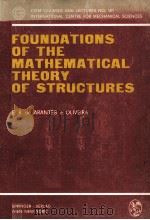
- FOUNDATIONS OF THE MATHEMATICAL THEORY OF STRUCTURES
- 1975 SPRINGER-VERLAG
-

- The mathematical theory of coding
- 1975 Academic Press
-

- MATHEMATICAL FOUNDATIONS OF QUANTUM THEORY
- 1978 ACADEMIC PRESS
-
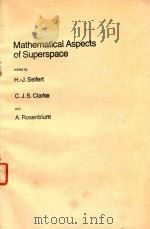
- MATHEMATICAL ASPECTS OF SUPERSPACE
- 1984 D. REIDEL PUB. CO
-
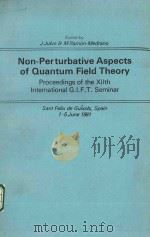
- NON-PERTURBATIVE ASPECTS OF QUANTUM FIELD THEORY
- 1982 WORLD SCIENTIFIC
-

- THE QUANTUM THEORY OF RADIATION
- 1995 CLARENDON PRESS
-
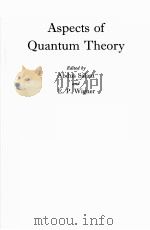
- ASPECTS OF QUANTUM THEORY
- 1972 CAMBRIDGE AT THE UNIVERSITY PRESS
-
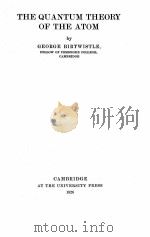
- THE QUANTUM THEORY OF THE ATOM
- 1926 AT THE UNIVERSITY PRESS
-
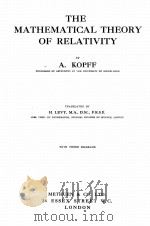
- THE MATHEMATICAL THEORY OF RELATIVITY
- 1923 METHUEN AND CO. LTD.
-
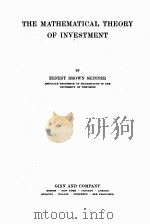
- THE MATHEMATICAL THEORY OF INVESTMENT
- 1913 GINN AND COMPANY
-
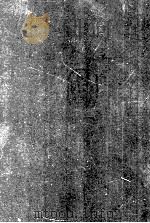
- QUANTUM THEORY OF THE CHEMICAL BOND
- 1974 D.REIDEL PUBLISHING COMPANY
-
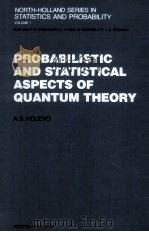
- PROBABILISTIC AND STATISTICAL ASPECTS OF QUANTUM THEORY
- 1982 NORTH-HOLLAND PUBLISHING COMPANY
提示:百度云已更名为百度网盘(百度盘),天翼云盘、微盘下载地址……暂未提供。➥ PDF文字可复制化或转WORD
